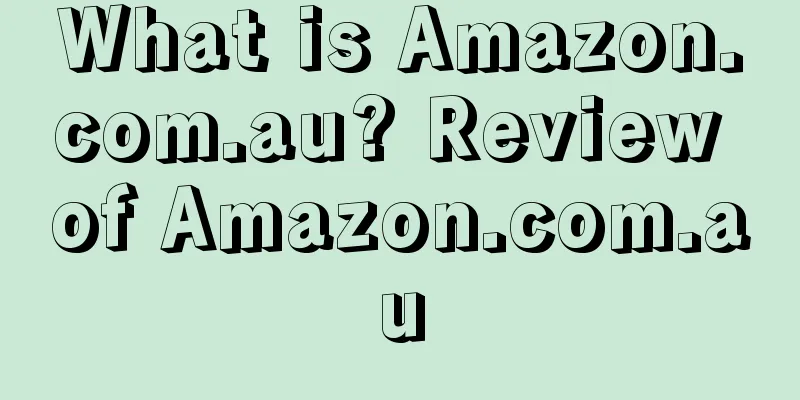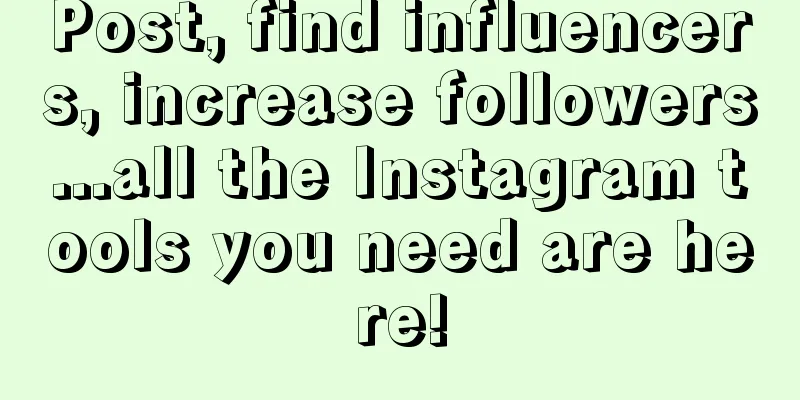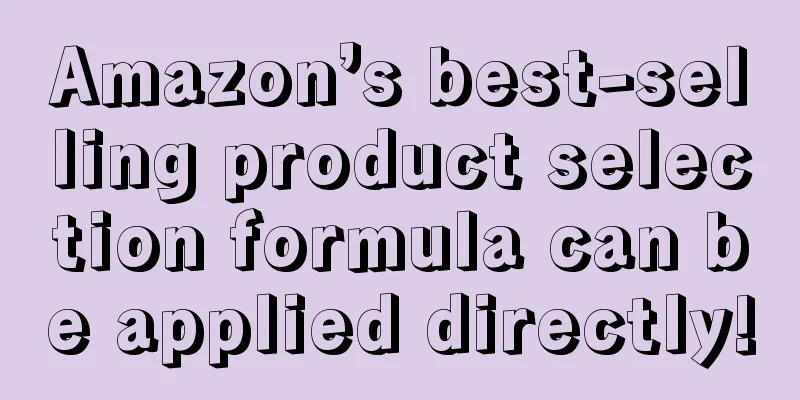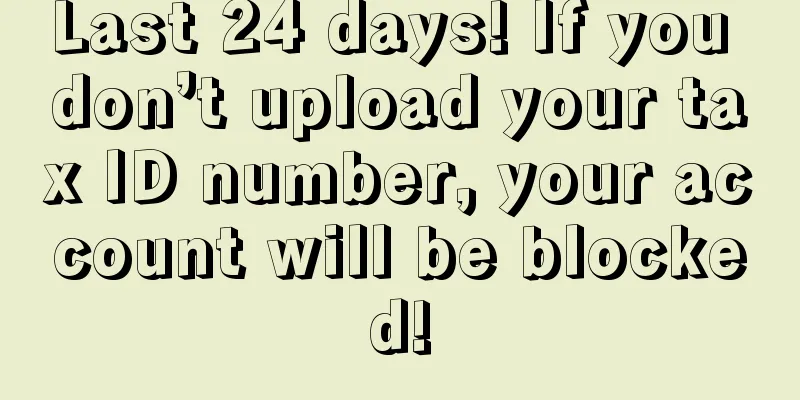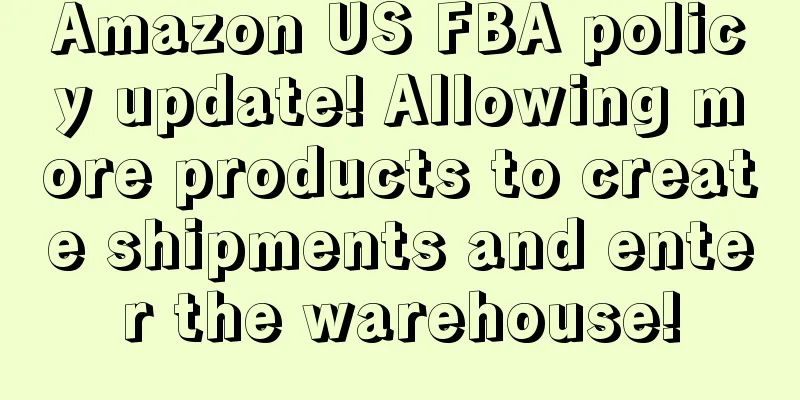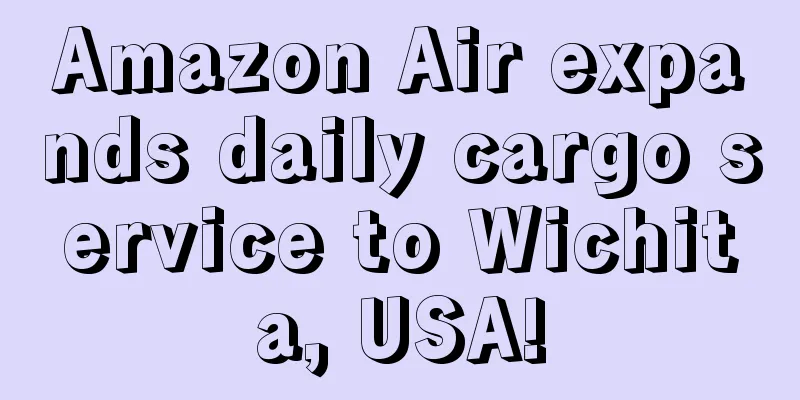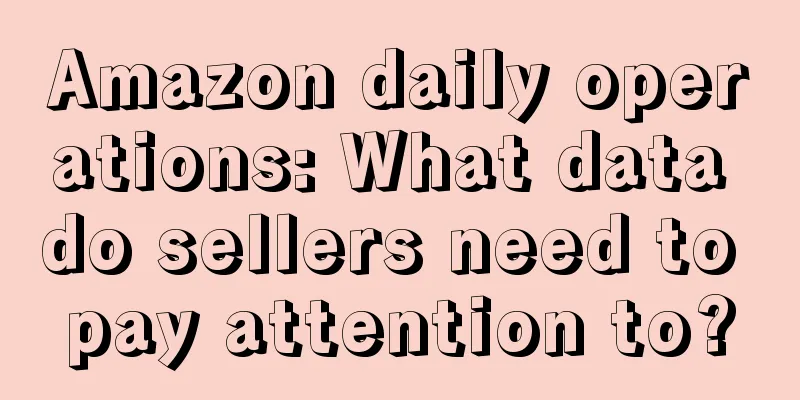Uncovering the e-commerce marketing strategies and tools used by 6 million-level e-commerce brands
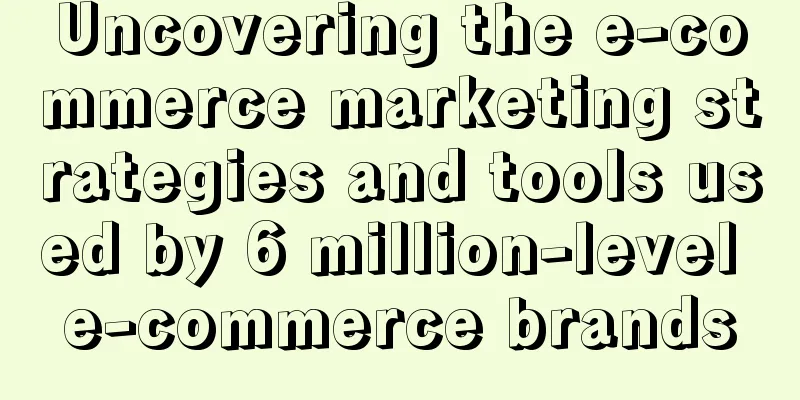
|
The secret to building a million-level e-commerce business is to use successful marketing strategies. So how do the top e-commerce brands market to drive product sales? Here are the marketing strategies used by 6 outstanding e-commerce brands, hoping to help sellers get some marketing ideas. 1. GearBunch: Using e-commerce marketing strategies to achieve $5 million in annual sales GearBunch was founded in 2017 and the company aims to exceed $10 million in sales by the end of 2018. It mainly uses video and remarketing campaigns on Google, Facebook, and email. Here are the company's 4 main e-commerce marketing strategies: (1) Create high-quality video content that drives millions of views GearBunch acquired up to 85% of its new users through Facebook advertising, and most of its advertising content is high-quality videos. Although these video ads are expensive to produce, they also bring high returns. (2) Use tools to improve return on investment (ROI) In addition to Facebook video ads, GearBunch's other traffic source is Google ads. Facebook and Google ads generate 5,000 unique visitors to its website every day. It uses Google Ads App Traffic Booster to automatically customize ads and increase traffic, ultimately increasing its return on investment by 6 times. Its ads are mainly placed on: Google search Google Shopping Google Display ·Youtube. (3) Use remarketing to increase the proportion of returning customers to 30% The e-commerce brand remarketed to site visitors and past customers, ultimately allowing the company to achieve a 30% return rate and an average order value of $152. It viewed the entire order fulfillment process as part of its marketing strategy: providing quality products and excellent customer service at every stage of the shopping process, and then using strategic Google, Facebook, and email remarketing campaigns to market specifically to satisfied customers. (4)Use different e-commerce email campaigns for different audiences You may know that you get the best ROI through email marketing, but if you don’t fine-tune your emails to deliver specific campaigns to specific segments, your marketing strategy won’t be effective. GearBunch understands this and markets to different target audiences: Hot audiences Warm audiences: audiences who have recently visited the site and have never purchased or have purchased only once. Cold audiences: those who have not purchased anything on the site and have not visited the site in a while. Here’s an example of a campaign that helped this eCommerce business win back cold audiences and earn $50,000 in profit: The company's big promotional marketing email sequence goes like this: · Email 1: This promotion is in progress; Email 2: You have 4 days left to enjoy the promotion. · Email 3: You have 2 days left to enjoy the promotion. · Fourth email: The promotion lasts 24 hours; · Fifth email: The promotion lasts for 12 hours; · Email 6: The promotion lasts 4 or 6 hours; Email 7: Only one hour left! You need to buy now. Here are some of the marketing automation apps and tools GearBunch recommends: Klaviyo, to run email campaigns and promotion setups; Recart, which automates remarketing campaigns; Traffic Booster, runs, manages and optimizes Google ads to improve ROI; Zendesk, which helps manage top-notch customer service. 2. Bleacher Creatures: Following market trends and developing a multi-channel e-commerce marketing strategy Bleacher Creatures is another successful eCommerce brand whose winning marketing strategy includes tweaking traffic sources, onsite marketing, influencer marketing, and email marketing. (1) Overcoming the problems caused by multi-channel exposure Bleacher Creatures sells its products on partner sites, Amazon, its own website, and sometimes at physical sporting events, making it difficult for remarketing to break through because potential buyers can find its products in a variety of channels, including retail stores and online. One of the easiest and most affordable ways to overcome this problem is through website marketing. One of its most important remarketing tools is Coupon Pop. With Coupon Pop, it can successfully build its online database and ensure that it has a strong base of emails and social media followers for remarketing. (2) Create brand awareness content to entertain audiences Another key part of its e-commerce marketing strategy includes building social brand awareness on Instagram and Facebook. It understands the importance of content marketing to build brand awareness and uses blog content, Instagram content and Facebook videos and live broadcasts to promote the "make you smile" goal, creating brand awareness while entertaining the audience. (3) Conduct seasonal social promotions Using Facebook, Instagram, and email, Bleacher Creatures has used strategic, event-based promotions to drive sales over the past few years. Here’s an example of the type of marketing content it’s run in the past: (4) Email marketing focuses on quality rather than quantity Bleacher Creatures not only understands that email segmentation is important, but it also understands the downside of oversaturating your email marketing. Instead, it puts a lot of planning into email frequency and content. It does this by sending a few promotional campaign emails throughout the year (outside of the big holiday shopping days) that are built to target specific audience segments. In addition to promotional emails, it also sends segmented email pushes with new product lines and sports news (such as wrestling or NBA news), ensuring that the emails are relevant and not overwhelming potential buyers with emails. Here is an example of such an email: *Tip: Marketing automation tools and apps used by Bleacher Creatures include: To embed Instagram posts on its website, it used Snappet. To grow its social and email databases, it used Coupon Pop. To schedule and run promotional and automated email marketing campaigns, it uses MailChimp. 3. One Kid: Direct contact with customers Since launching its new Road Coat® in 2015, it has developed a scalable marketing strategy using Facebook ads and Google remarketing to consistently drive traffic to its store, which has helped it achieve annual revenue of over $600,000 in two years. The following are the main strategic points of its e-commerce marketing strategy: (1) Driving traffic growth with organic Facebook videos and paid Google remarketing campaigns Nearly 15% of One Kid’s revenue last year came directly from Google Ads campaigns run by its Traffic Booster, with ad spending of just $12,000 in all of 2017. Its second largest traffic source is Facebook video, created ads and influencer videos. One product review video from influencer CafeMom alone has 14 million organic views. The video is just a simple product description outlining the dangers of children wearing winter jackets in car seats and explaining how RoadCoat® solves this problem. In addition to Facebook influencer marketing, One Kid spends $500 per week on Facebook advertising, including remarketing ads and ads targeting lookalike audiences. (2) Continuously attract potential buyers If you look at One Kid’s social profiles, you’ll see that engaging with its audience is a key part of its marketing and branding strategy, and one of the main ways to do this is by acquiring, sharing, and engaging with UGC content. Another marketing tool One Kid uses is Facebook Live, which allows them to answer any questions from potential buyers and help them convert their purchases while also providing a unique way to directly engage with potential and existing buyers. (3)Use email marketing to drive conversions Starting with the first email, One Kid offers a 10% discount for every email sign-up from the ad. Once someone signs up for the emails, they will receive 25 automated emails over a 120-day period. This includes one email every three days for the first 10 days, and then weekly emails. For example, a potential buyer who signs up for the email push in August will still receive emails during the year-end peak season when they are more likely to convert. The 120-day email cycle is a good fit for One Kid because the company's products are seasonal and it takes a longer gestation period to convert audiences into buyers. These strategies may not apply to your products, but it provides insights on how to tailor your campaigns. Statistics show that One Kid's average email open rate is 33%, click-through rate is 4%, and conversion rate is 2.4%. In addition to strategic sign-up series, they also run quarterly promotions and abandoned cart emails, which resulted in a 25% cart recovery rate last year. These abandoned cart reminder emails also promote their 90-day free return policy, which has been very successful. Here is a full list of automated emails they include in their marketing strategy: Abandoned shopping cart reminders; Win back buyers; Welcome new registered users; Feel the buyer again; Ask for product reviews. 4. Impact Mouthguards: The ideal marketing mix for sustained growth Impact Mouthguards’ product is unique, so its marketing campaign started with word of mouth and then progressed to influencer and online marketing to educate its target audience and let them know what makes the product unique. Its winning marketing strategies are primarily generating website traffic, email marketing, on-site marketing, Facebook, and the ability to transform as the market allows. Here is a breakdown of how it handles each: (1) Balancing Facebook and Google Ads to Simplify Traffic While the brand’s business started with word of mouth, it has been pushing for more online marketing efforts. Over the past few years, Impact Mouthguards has begun investing more time and budget on Facebook ads to drive traffic to its own website. However, it incorporated Google Ads remarketing campaigns into its traffic strategy, allowing it to balance its campaigns to bring in a steady stream of traffic. Not just any traffic, of course, but targeted, high-quality traffic. (2) Keep pace with the times and strive for market share One of the most important factors in Impact Mouthguards’ success is its ability to adapt with changing markets and technologies. This year it did this in two ways: Adding mouthguards to its product range, which allows it to enter new market segments; Completely revamp the website. Although its website is only three years old, it still decided to completely revamp the site to better attract the growing number of mobile users. It also decided to change all product images to 3D modeling to ensure that product images have better effects throughout the website. In addition, as they continue to focus on how to make the overall customer experience better, the revamped store includes more colors and designs, and buyers can choose which sport they want a mouthguard for, and then attract the audience with the most suitable design. In short, it treats user experience as a marketing tool and constantly strives to improve it. (3) Old-school offline marketing and field marketing Impact Mouthguards has gained a lot of positive word-of-mouth by strategically giving away free mouthguards among teams and gyms, and also by setting up tents/tables at sporting events to talk directly to athletes. It’s this old-fashioned offline and on-site marketing that has landed the company sports partners, including a number of football, boxing and hockey teams and leagues, which not only means more revenue but also helps boost brand trust with online buyers. (4) Use Facebook as an all-in-one marketing solution Impact Mouthguards uses Facebook as a complete marketing solution, driving traffic through Facebook remarketing campaigns and streamlining customer service through Facebook Messenger. At just $1,000 a month, some of its videos have racked up more than 300,000 views. It then remarkets to that Facebook traffic through email push, 20-90% off promotions, contests, and automated welcome and abandoned cart emails. *Tip: Marketing automation tools and apps used by Impact Mouthguards include: To integrate Facebook and custom advertising strategies to increase traffic, Impact Mouthguards uses Traffic Booster. To simplify customer service and user experience, it uses the BOLD Shopify app. To properly track order fulfillment, Impact Mouthguards uses Order Manager. For email marketing and scheduling, it uses Klaviyo. 5. Glam Guru: Marketing strategies to help you stand out from your competitors Glam Guru, which sells products in a highly competitive market, stands out by sticking to its niche, selling beauty products, and establishing authority in its market to ensure that it becomes the first choice for buyers to choose suitable beauty products. It uses traffic streams and influencer brands and blogger partners, as well as UGC content to help buyers make purchasing decisions. Here are some unique marketing strategies from Glam Guru that sellers can follow to outperform their competitors: (1) Personalized customer service Sellers need to understand that customer service is an integral part of a brand’s marketing strategy, and Glam Guru not only understands this but also takes full advantage of it. Its personalized customer service is designed specifically for the beauty market to help its audience choose the perfect product. Glam Guru personalizes customer service in the following ways: Live chat tool on the website; A closed Facebook group Dedicated customer service phone number. All of these ensure that buyers or potential users can contact for relevant information anytime and anywhere, and provide them with real-time valuable and useful information. (2) Take social media marketing to the next level using influencers and rewards You might think word of mouth is outdated, but Glam Guru proves otherwise. It uses two main marketing strategies to drive word of mouth: offering customers online and offline incentives and promoting products; and creating an influencer program that it has been developing for five years. Glam Guru blends affiliate marketing and influencer marketing into a unique program that features over 150 influencers who post blogs, videos, and posts on their blog, YouTube, and Instagram every month. Developing its own in-house affiliate technology means it has managed to streamline the design of the program, allowing influencers to earn commissions on sales and grow their influencer businesses, while enabling e-commerce brands to track stats. (3)A sound email marketing strategy Email marketing is the third major part of Glam Guru’s marketing strategy, which continues to pursue a personalized strategy. Its email marketing strategy includes different email promotions and marketing, including high-value content created specifically for a small segment of the audience. These email marketing segments are based on the types of products the user has purchased or is interested in purchasing and the time frame of their last purchase. This means, for example, that they send makeup promotions to makeup buyers and skin care promotions to skin care searchers. Additionally, it has a general automated welcome email series, broken down as follows: Email 1: Overview of your company, brand story, and unique approach to personalized customer service Email 2: About how their website works, the products they offer, and the benefits of joining their rewards program. Email 3: More promotional content, including products to attract specific new users. *Tip: Marketing automation tools and apps used by Glam Guru: To integrate Facebook and Google advertising strategies to increase traffic, it used Traffic Booster. To create and manage promotional and automated emails, it uses MailChimp. Noli Yoga: Created an e-commerce leggings business with $3.5 million in revenue What sets Noli Yoga’s leggings apart from other brands is the quality of the product. The brand’s goal is to source the finest materials and blend them with unique, bold designs to create a unique product. It has reached $3.5 million in annual revenue in just three years, with a 31% repeat customer rate. Here are some of the techniques the company uses: (1) High-cost, high-return social PPC advertising strategy Noli Yoga spends about $65,000 per month on Facebook and Instagram campaigns. It runs a variety of product and retargeting ads on Facebook and Instagram. Additionally, it uses only high-end images in its PPC campaigns and landing pages, and hires a professional photographer to take product photos once a month. (2) Use UGC content on Instagram, newsletters, and product pages Noli Yoga found that UGC content was very useful in creating shoppable posts, and it also includes UGC content in newsletters and product pages. In addition, using real customer reviews in remarketing ads has also brought it great success. To create review-based ads and newsletters, Noli Yoga uses YotPo App to help it integrate reviews into remarketing campaigns to build more brand trust. (3)Use email marketing to boost conversions When a potential user submits their email address to sign up for the newsletter, they receive a series of emails from Noli Yoga: Email 1: Welcome email; Email 2: Discount code for new orders Email 3: Accounts and hashtags that encourage social interaction Email 4: A promotional email highlighting the hottest products right now. Its newsletter push strategy includes sending holiday promotional emails, introducing new products, and announcing promotions. The main goal of these emails is to introduce new products to customers. Finally, its abandoned cart reminder email series, which runs through Shopify and an app called Jilt, includes: Email 1: Sent by Shopify one hour after cart abandonment Email 2: “Product selling out soon” sent within 24 hours of abandoned cart Email 3: 48 hours after abandonment reminder Email 4: Discount code sent 96 hours after cart abandonment. It then used a Facebook remarketing campaign to target shoppers who had abandoned their carts one week later, offering an 20% discount through Facebook. Using the above strategy, it saw the highest conversion rate for Email 2 and an overall cart recovery rate of 22%. *Tip: The marketing automation tools and apps used by Noli Yoga are as follows: To create shoppable Instagram posts and embed Instagram captions to make them clickable, Noli Yoga used Foursixty. To create promotional emails in a user-friendly way, it uses MailChimp; To enable customers to review products directly from email, it uses YotPo. (Translated by Fang Xiaoling) |
<<: Using Google Shopping to expand e-commerce business series ③: How to set up Merchant Center
>>: Here are the 10 best-selling products under $30 on Amazon
Recommend
The First Amazon Sellers’ Misery Competition
Every year, our Amazon sellers There are 365 days...
Shocking news! SHEIN headquarters may move to Singapore, founder suspected of "changing nationality"?
The sea presses down on the bamboo branches, whic...
【Lucy's Date】To sell your Amazon brand or not, that is the question
- Interview with Henry Xu, Head of Greater China A...
What is Ruelala? Ruelala Review
Ruelala is a website that specializes in limited-t...
What is Mote Poh? Mote Poh Review
Mote Poh is Myanmar's leading employee benefit...
As internal circulation prevails, profits fall below the red line, and sellers call for an end to philanthropist behavior!
It is understood that according to foreign media r...
Etsy launches “Image Search” feature! Now available to iOS users!
<span data-docs-delta="[[20,"获悉,据外媒报道,11月2...
What is Qianxiang Box Overseas Warehouse? Qianxiang Box Overseas Warehouse Review
Qianxiang Box Technology Warehousing (Shenzhen) Co...
What is Kaola.com? Kaola.com Review
Kaola.com is a membership e-commerce platform unde...
Pure white hat operation on Amazon, how to quickly get 30-50 positive reviews, how to get a high conversion rate without any reviews?
1. How to get 30-50 positive reviews without any ...
The US holiday shopping season is about to begin! More than 70% of online consumers choose Amazon!
A new survey from shopping and rewards app Shopkic...
The first shot of the new year! Amazon's new feature to crack down on multiple accounts is launched!
Cross-border Business School Information and skil...
Amazon Practical Information (I)
Today I share 10 ways to get product selection in...
Amazon Reviews are going to change?! These products will suffer
Since Amazon officially announced the average sco...
Get ready for the shopping season! Best Buy launches a new annual membership plan!
It is learned that according to foreign media repo...
